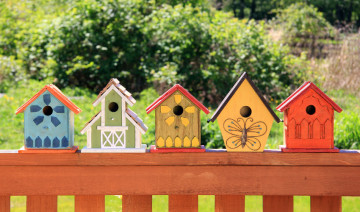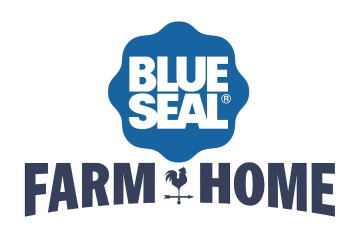{article.name} Monthly Blog Articles
WE DELIVER
Peterborough, NH: 603-924-6801 Brattleboro, VT: 802-254-8755 Walpole, NH: 603-756-9400 Hillsboro, NH: 603-464-3755 Milford, NH: 603-673-1669 Keene, NH: 603-357-5720Choosing a Birdhouse

- Share this:
- Share on Facebook
- Pin on Pinterest
- Tweet on Twitter
A birdhouse provides safe shelter and a protected nesting site for wild birds, but which house is best for which birds? Choosing a birdhouse with the birds’ needs in mind can help you select the perfect housing option for your favorite feathered families.
Which Birds Use Houses?
Not all birds are cavity-nesting and not all birds will use birdhouses. Backyard favorites such as cardinals, robins, goldfinches, and hummingbirds won’t nest in birdhouses, but other amazing species feel most comfortable in a cozy nesting hole. Top species that will happily use birdhouses include:
- Bluebirds
- Chickadees
- Nuthatches
- Titmice
- Woodpeckers
- Wrens
To choose the best birdhouse, it is important to know which birds are already regular guests in your yard. If the birds are already comfortable in the yard visiting feeders or baths, they will be more likely to investigate and perhaps move in to a birdhouse.
Best Birdhouse Designs
It doesn’t matter which bird you hope to attract to a birdhouse, all the best houses share similar features that make them safe and attractive to nesting birds. The best birdhouse designs will have…
- Appropriate Entrance Sizes – The right size entrance hole will accommodate desired birds while keeping out larger bully birds that might take over prime nesting sites. Different birds prefer different hole sizes, but most birds will enjoy an entrance that is 1 1/8 to 1 1/4 inches wide.
- Ventilation – Good ventilation will keep air circulating through a birdhouse for better temperature regulation, keeping nesting birds and young chicks cool on hot summer days. Ventilation holes should be high on the walls but protected by the eaves so no water can leak in.
- Adequate Floor Space – A cramped house could cause young birds to smother as they grow and won’t be able to accommodate birds that raise larger families. A good size for most birds is a house that measures 4-6 inches square on the interior floor.
- Drainage Holes – Birds can be messy, and drainage holes allow feces and debris to leak out of the house to keep it cleaner, and will also provide additional ventilation. Drainage holes should not be so big, however, that birds’ feet could get stuck.
- Sturdy Materials – The best birdhouses are wood, though recycled plastic can also be a great choice. Avoid metal birdhouses, which can turn into miniature ovens in the summer heat. The walls, floor, and roof of the house should be roughly 1/2 inch thick.
- Access Panels – It is important to clean a birdhouse after every family is raised to remove debris and sterilize the house from bacteria, mites, and other parasites. A hinged side, front, or roof will allow easy access into the house for thorough cleaning.
- Mounting Options – Birdhouses can be hung from a branch or pole, or might be mounted on a post, wall, or fence. The mounting hardware should be sturdy to keep the house steady and secure as birds are going in and out.
- No Perches – While perches are classic birdhouse decorations, birds don’t need them and a perch only provides a handhold for hungry predators. If you really like the look of a perch, cut it down to a tiny nub for a good look without giving predators access to the nest.
The better a birdhouse is designed, the more attractive it will be to birds looking for a safe, secure nesting site. Some birdhouses come with all the appropriate features, while others are easy to alter to add extra ventilation, drainage, or remove a perch to make them more appealing to birds.
Attracting Birds to Birdhouses
When you do choose a birdhouse, it can be exciting to see a feathered family move in. Ensuring a good food supply with both natural foods – berries, nuts, grasses, fruit, insects, etc. – and supplemental feeders will attract birds, and there should also be fresh, clean water nearby. Positioning a birdhouse in a quiet area will be more attractive to birds so they aren’t spooked at delicate nesting times, and the house should be protected by baffles or other safeguards to keep predators away. Providing nesting materials such as natural cotton, grass clippings, small twigs, and bits of leaves will also help encourage birds to set up housekeeping.
Above all, be patient when putting up birdhouses and hoping to see birds move in. Birds can be picky with their real estate, but if a good birdhouse is put out early in the season just when birds are looking for nesting sites, it is sure to attract the attention of prospective families.



Comments